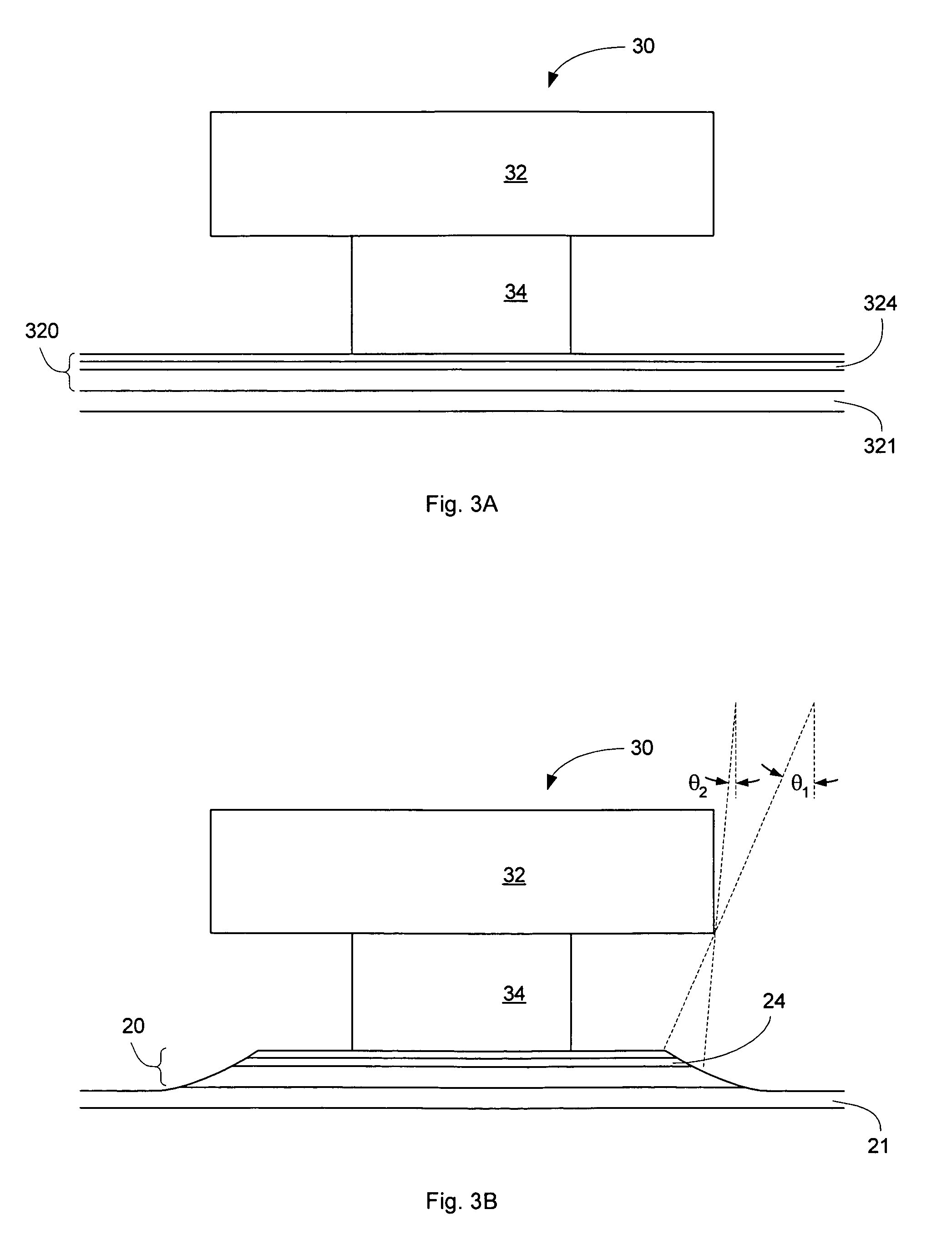Method for forming a hard bias structure in a magnetoresistive sensor
a magnetoresistive sensor and hard bias technology, applied in nanoinformatics, instruments, manufacturing tools, etc., can solve the problems of difficult to obtain the free layer and the appropriate alignment of the hard bias layer using conventional processing methods
- Summary
- Abstract
- Description
- Claims
- Application Information
AI Technical Summary
Benefits of technology
Problems solved by technology
Method used
Image
Examples
example 1
[0048]In this example, the design height FL of the midplane of the free layer over the top surface of the gap is 200 Ångstroms, and the design depth T of the overmill is 20 Ångstroms. The required design thickness of the second Cr deposition (CRII, Ångstroms) for six selected hard bias thicknesses (HS, Ångstroms) and corresponding MRTs is shown in the following Table A:
[0049]
TABLE AMRTHSCRII2.530517.52250451.518776.51.2515791.511281060.7596122
example 2
[0050]In this example, the design height FL of the midplane of the free layer over the top surface of the gap is 300 Ångstroms, and the design depth T of the overmill is 10 Ångstroms. The required design thickness of the second Cr deposition (CRII, Ångstroms) for six selected hard bias thicknesses (HS, Ångstroms) and corresponding MRTs is shown in the following Table B:
[0051]
TABLE BMRTHSCRII3370752.5305107.522501351.5187166.51.25157181.51128196
PUM
| Property | Measurement | Unit |
|---|---|---|
| deposition angle | aaaaa | aaaaa |
| deposition angle | aaaaa | aaaaa |
| deposition angle | aaaaa | aaaaa |
Abstract
Description
Claims
Application Information
 Login to View More
Login to View More - R&D
- Intellectual Property
- Life Sciences
- Materials
- Tech Scout
- Unparalleled Data Quality
- Higher Quality Content
- 60% Fewer Hallucinations
Browse by: Latest US Patents, China's latest patents, Technical Efficacy Thesaurus, Application Domain, Technology Topic, Popular Technical Reports.
© 2025 PatSnap. All rights reserved.Legal|Privacy policy|Modern Slavery Act Transparency Statement|Sitemap|About US| Contact US: help@patsnap.com



